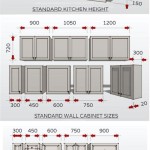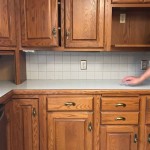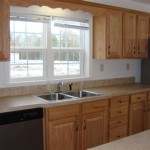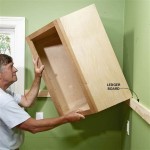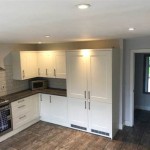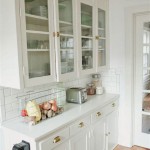Understanding Kitchen Cabinet Parts: A Comprehensive Diagram and Guide
Kitchen cabinets are a fundamental component of any kitchen design, providing essential storage space and contributing significantly to the overall aesthetic. Understanding the various parts of a kitchen cabinet, as illustrated in a detailed parts diagram, is crucial for homeowners undertaking renovations, DIY projects, or simply seeking to better maintain their existing cabinets. This article provides a comprehensive overview of common cabinet components, explaining their functions and constructions.
A kitchen cabinet parts diagram serves as a visual key, allowing users to identify and understand the names and locations of the different elements that comprise a cabinet. While specific designs may vary, the core components remain relatively consistent across different cabinet styles. This knowledge facilitates informed decision-making when purchasing new cabinets, repairing damaged ones, or customizing existing units.
Key Point 1: Cabinet Box Construction
The cabinet box forms the foundational structure of the cabinet. It is typically constructed from plywood, particleboard, or medium-density fiberboard (MDF). The box is comprised of several key pieces:
Sides (End Panels): These vertical panels form the sides of the cabinet. They are typically made from ½-inch to ¾-inch thick material and are often finished to match the cabinet doors and drawer fronts. In exposed end cabinets, the end panels are often decorative or have a finished veneer.
Top and Bottom Panels: These horizontal panels form the top and bottom of the cabinet box. They provide structural support and serve as mounting surfaces for countertops and base supports. The bottom panel is often reinforced to support the weight of stored items.
Back Panel: This panel encloses the back of the cabinet box. It is typically made from thinner material than the sides, top, and bottom panels, and can be made from ¼-inch plywood, hardboard, or even plastic laminate. The back panel is important for maintaining the cabinet's rigidity and preventing racking.
Frame (Optional): Some cabinets, particularly traditional styles, feature a face frame. This is a wooden frame that attaches to the front edges of the cabinet box. The face frame provides added strength and a more finished look. Frameless cabinets, also known as European-style cabinets, do not have a face frame, offering a sleeker, more modern appearance.
Toe Kick: The toe kick is the recessed area at the bottom of the base cabinets, allowing users to stand comfortably at the countertop. It is typically constructed from a separate piece of wood or plastic and attached to the base of the cabinet.
The method of joining these components is crucial to the overall durability of the cabinet. Common methods include screws, dowels, pocket screws, and glue. Higher-quality cabinets will often utilize more robust joining methods to ensure longevity.
Key Point 2: Doors and Drawer Components
Doors and drawers are the primary access points to the storage space within the cabinets. Understanding their components is essential for both maintenance and customization.
Door Panel: The door panel is the main surface of the cabinet door. It can be made from a variety of materials, including solid wood, wood veneer, MDF, or laminate. The design of the door panel can range from simple flat panels to elaborate raised panel designs.
Door Frame (Stiles and Rails): For many door styles, particularly traditional designs, the door panel is surrounded by a frame consisting of vertical pieces called stiles and horizontal pieces called rails. These frame components are typically made from solid wood or MDF and are joined together to create a sturdy frame for the door panel.
Hinges: Hinges attach the cabinet doors to the cabinet box, allowing them to swing open and closed. There are various types of hinges available, including concealed hinges (also known as European hinges), which are hidden from view when the door is closed, and exposed hinges, which are visible on the outside of the cabinet. Hinge quality is critical for smooth and reliable door operation.
Drawer Front: The drawer front is the visible face of the drawer and is typically designed to match the cabinet doors. It can be made from the same materials and designs as the doors.
Drawer Box: The drawer box is the structural component of the drawer, consisting of sides, a front, and a back. It is typically made from wood or melamine and is joined together using various methods, such as dovetail joints, rabbet joints, or screws. Durable drawer box construction is essential for handling the weight of stored items.
Drawer Slides: Drawer slides allow the drawer to smoothly slide in and out of the cabinet. There are various types of drawer slides available, including side-mounted slides, undermount slides, and center-mounted slides. Ball-bearing slides are known for their smooth operation and durability.
Pulls and Knobs: These hardware elements are attached to the doors and drawers to provide a grip for opening and closing them. They come in a wide variety of styles, materials, and finishes, allowing homeowners to customize the look of their cabinets.
Key Point 3: Interior Cabinet Features and Accessories
The interior of a cabinet can be equipped with various features and accessories to enhance its functionality and organization.
Shelves: Shelves provide horizontal storage space within the cabinet. They can be adjustable or fixed and are typically made from plywood, particleboard, or glass. Adjustable shelves allow for greater flexibility in storing items of different sizes.
Roll-Out Trays: Roll-out trays, also known as pull-out shelves, are shelves that slide out of the cabinet, providing easy access to items stored at the back. They are particularly useful for storing pots, pans, and other bulky items.
Lazy Susans: Lazy Susans are rotating shelves that are typically used in corner cabinets to maximize storage space and accessibility. They allow users to easily reach items stored at the back of the cabinet.
Spice Racks: Spice racks are designed to store spices in an organized and accessible manner. They can be mounted on the inside of cabinet doors or on the cabinet wall.
Dividers: Dividers are used to separate items within a drawer or cabinet, preventing them from sliding around and making it easier to find what you need. They can be used in drawers to organize cutlery, utensils, or other small items.
Pull-Out Waste Containers: These are integrated waste and recycling containers that are concealed within a cabinet. They provide a convenient and hygienic way to dispose of waste.
Understanding the different parts of a kitchen cabinet, as presented in a comprehensive parts diagram, empowers homeowners to make informed decisions about cabinet selection, maintenance, and customization. By familiarizing oneself with these components, one can better appreciate the craftsmanship and engineering that goes into creating functional and aesthetically pleasing kitchen cabinetry.

Cabinet Parts And Profiles

Cabinet Composition What Makes A High Quality Kitchen Plans Cabinets Parts Design

Image Result For Liebherr 1361 Icemaker Parts Diagram Kitchen Cabinets Height Pantry Cabinet

The Abcs Of Kitchen Cabinets Part 2 Akg Design Studio

How To Choose Kitchen Cabinets When Remodeling

Parts Of A Cabinet Doors

Kitchen Cabinet Construction Drawings Cabinets Drawing Buy

The Lancaster Collection Cabinet Specifications

How To Build Wall Cabinets Houseful Of Handmade

Remodel Your Home Design Studio With Perfect Helpful Kitchen Cabinet Dimensions Sta Cabinets For
Related Posts


